Key in a search term below to search our website.
Key in a search term below to search our website.
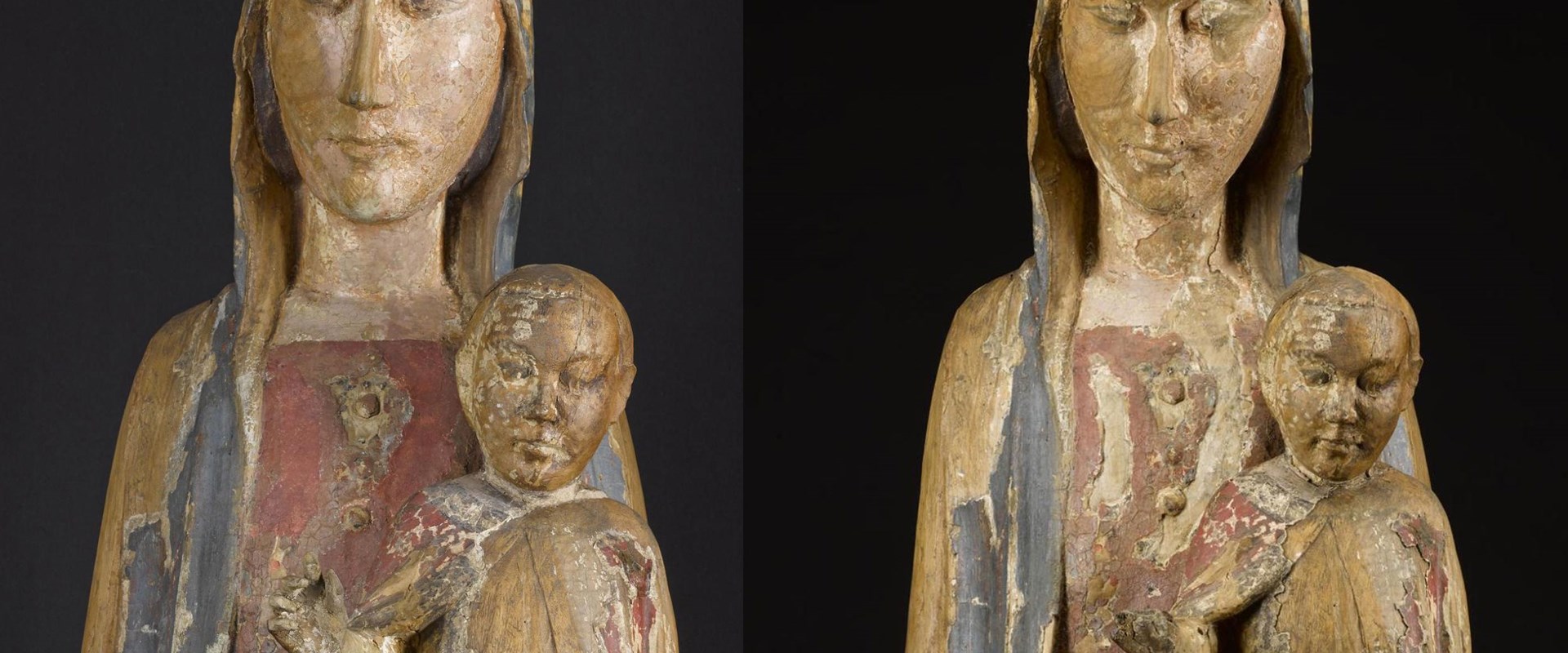
The first stage of this interdisciplinary project explored the history of the sculpture and included a scientific analysis of its components. The findings informed the conservation and display of this rare piece.
The Madonna has been painted many times over the course of her existence. Yet traces of the original decoration remain, suggesting that originally she was opulently adorned with gold and richly painted brocades. The paint layers have since degraded and flaked away in large areas, revealing the fine wood carving beneath.
Scientists at National Museums Scotland have studied the paint layers to try and establish how many colour schemes can be identified and which pigments were used. As well as being repainted while on display in church, the Madonna was also restored in the 1960s after entering the museum collection.
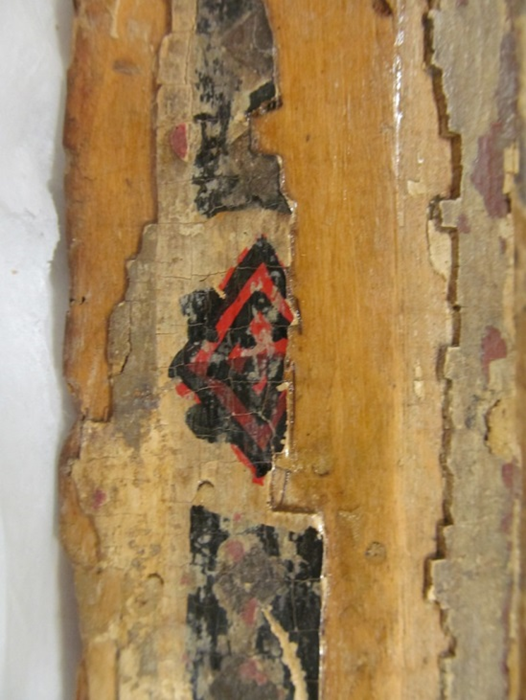
Above: Remnants of original paint decoration on the Madonna's throne.
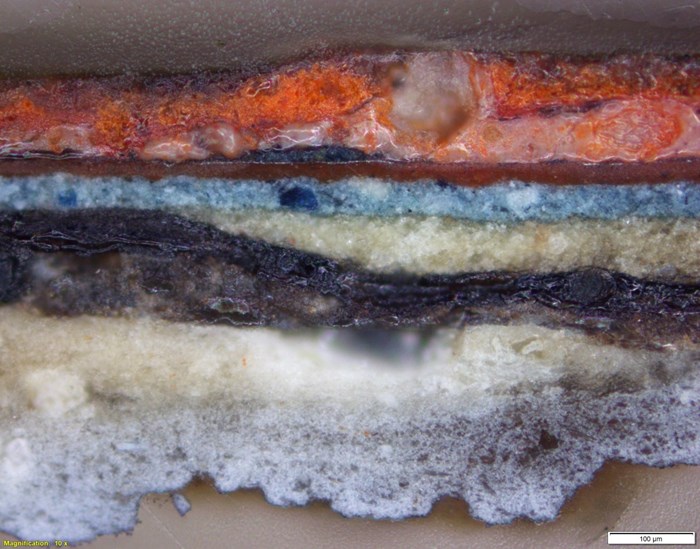
Above: Cross section showing the original paint layers and the numerous subsequent repaints on the Virgin’s robe.
By studying the Madonna under ultraviolet (UV) light, our conservators could see that large areas of her dress and face had been painted over in the 1960s. A decision was made to remove this paint because it was historically inaccurate, but the team knew this was a bold decision: would the Virgin look as appealing without eyes to hold the gaze?
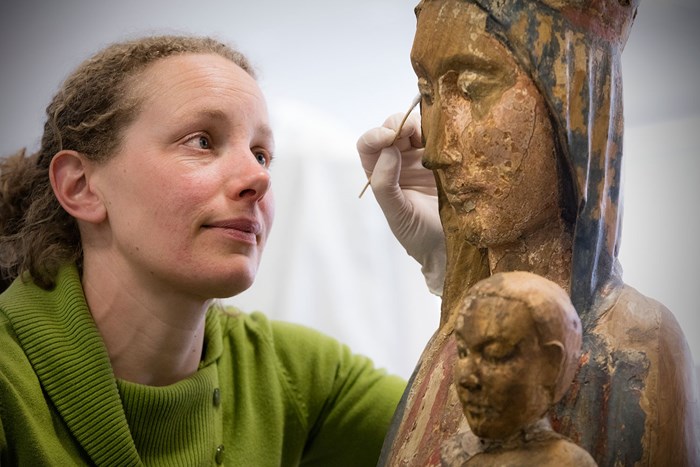
Above: Conservator Diana de Bellaigue working on the Madonna. You can find out more about her work in this blog post.
Eventually, the decision was made to remove the layer. The results were revelatory: a previously hidden underdrawing was exposed on the Virgin's face, possibly used by the painter to map out his design before applying the paint.
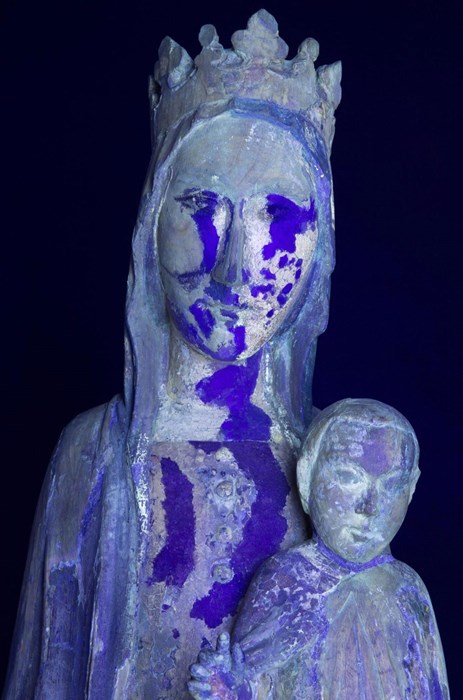
Above: The Madonna under UV light, which reveals large areas of overpainting. The very dark purple-blue areas were carried out at the museum in the 1960s.
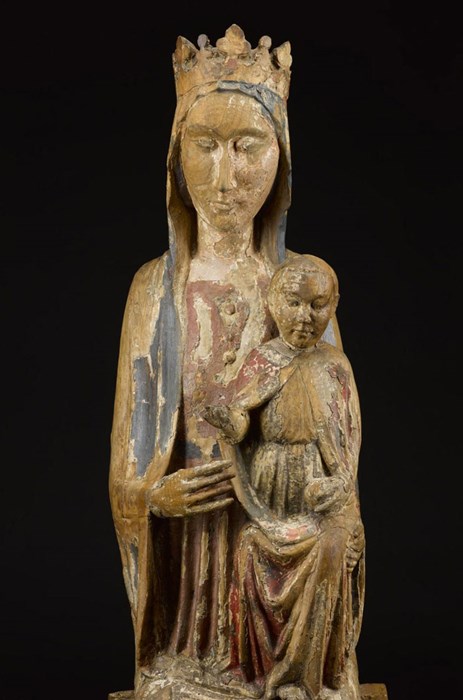
Above: The Madonna after conservation, with the underdrawing revealed.
CT scanning revealed that one of Christ's hands had been remodelled during the restoration work carried out in the museum workshop in the 1960s. This was a time when ‘restoration’ rather than ‘conservation’ was more in vogue. Generally, conservators at National Museums Scotland leave previous alterations made to objects intact, as part of the object’s history. However, new research showed that this modern repair was inaccurate and misleading, and so the remodelled fingers were removed. A drill hole revealed during this process may suggest that the Christ and Virgin were originally holding something, a lily perhaps.
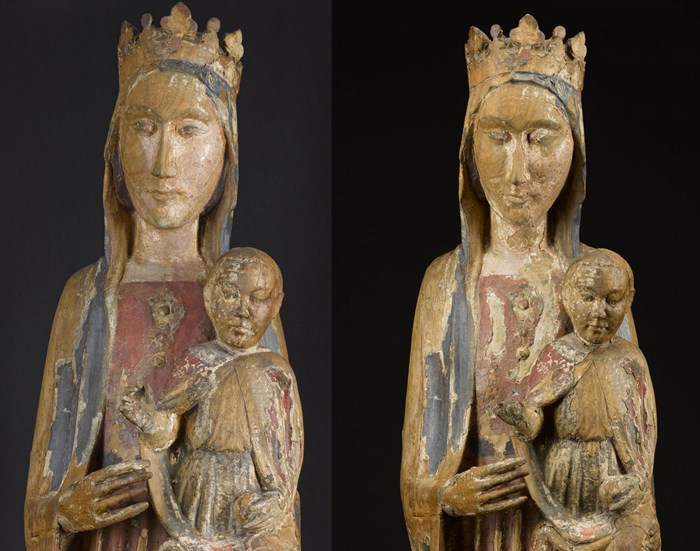
Above: Christ's hand before (left) and after (right) conservation.

Above: The xradiograph of the sculpture shows the nails used in its construction.
To investigate its structure, the sculpture underwent computed tomography (CT) and xradiography at the Royal (Dick) School of Veterinary Studies at the University of Edinburgh.
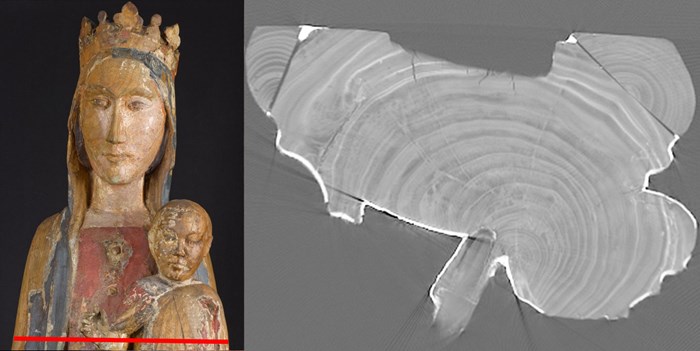
Above: Cross-sectional images of the CT scan reveal the ring pattern of the poplar wood the sculpture is made from, as well as construction techniques. The red line indicates the position of this cross section.